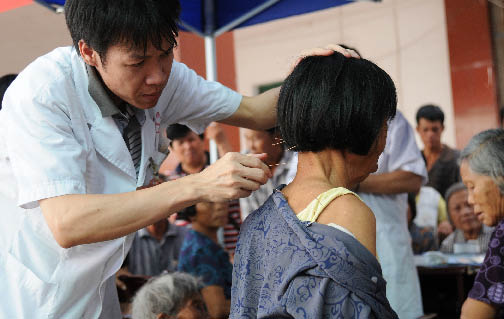| The Kindest Cut
By staff reporter XING WEN

Acupuncture is a highly developed and systematic therapy and the discipline continues to be refined.
ACUPUNCTURE, the procedure of inserting needles into points (hence acupuncture points) on one’s body to relieve pain, is a centuries-old medical practice that originated in China.
An important part of traditional Chinese medicine (TCM), the history of acupuncture stretches back to the Stone Age. The first instance of acupuncture’s use is believed to have been for pain relief for soldiers wounded by stone arrowheads. Instead of the steel needles used today, sharp edged stones were manipulated by our ancestors. It was not until the Han Dynasty (206 BC-AD 220) that sharp stone and bone shards were replaced by metal needles.
People go to acupuncturists today for treatment of arthritis, high blood pressure, paralysis and migraines; acupuncture has proved to be an effective remedy for a number of chronic diseases.
The theory behind acupuncture is closely associated with zang-fu (viscera), qi (vital energy) and jingluo (the meridians and collaterals of the human body).
From the perspective of traditional Chinese medicine, the human body can be seen as a map of organs, and organs can be divided into two types in accordance with the two functional systems of zang and fu. The system of zang refers to the yin organs like the liver while the system of fu consists of the yang organs like intestines. Yin and yang produce the impetus to keep the functional systems in balance. Disease is understood as a disorder of homeostasis. In other words, it is often caused by an imbalance of yin and yang.
Flowing in a circuit throughout the body, qi is our vital energy. The external pathways that qi travels correspond to the acupuncture points, while the internal pathways are related to zang-fu organs. Stagnation of the qi flow always leads to pain or discomfort. It is one of the diagnostic principles in TCM that an ache implies a blockage of qi.
| 

